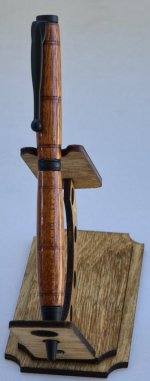Looks good!
As others have noted, you can save yourself a lot of time without really affecting your end result by sanding the bare wood only up to 600 or so. Since you're putting CA on top of it anyway, it's really diminishing returns to sand the wood any smoother than that. I imagine I wouldn't be able to tell the difference between a pen sanded to 600 prior to CA, and a pen sanded to 12000 prior to CA, even with a magnifying glass.
If you're struggling with CA buildup over the ends of the blanks, the easiest way I have found to deal with it is simply slicing it off with a sharp skew chisel while turning the pen by hand. I do this after applying CA and before doing any sanding or polishing on the CA. Go slow and you'll get a nice, clean edge that doesn't protrude and cause lifting or other problems when you assemble the pen, and generally I don't have to sand or otherwise mess with the ends of my blanks after finishing either.
And if you'd like to refine the final glossy finish even a bit more, I find using a plastic polish makes it look noticeably better than 12000 grit wet sanding alone. Pick your poison: HUT Ultra Gloss, Novus #2, One-Step, Meguiars, etc. Near as I can tell they all do the same thing. I used HUT Ultra Gloss for years, and when I couldn't find it in stock anywhere, switched to Novus #2 with no noticeable difference in results. I also use Renaissance Wax as a last step. It doesn't change the surface appearance at all, but it does seem to help the pen repel fingerprints a bit better.

